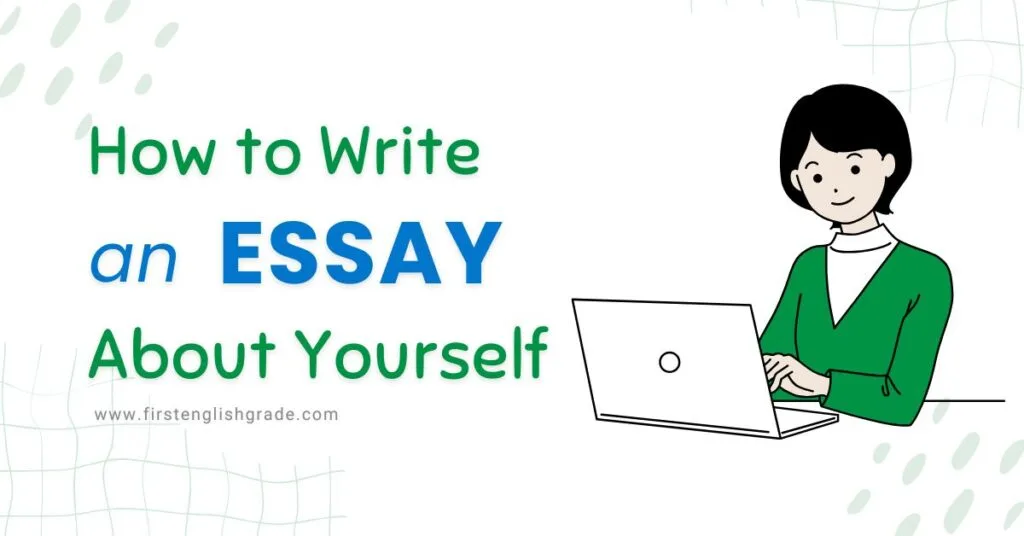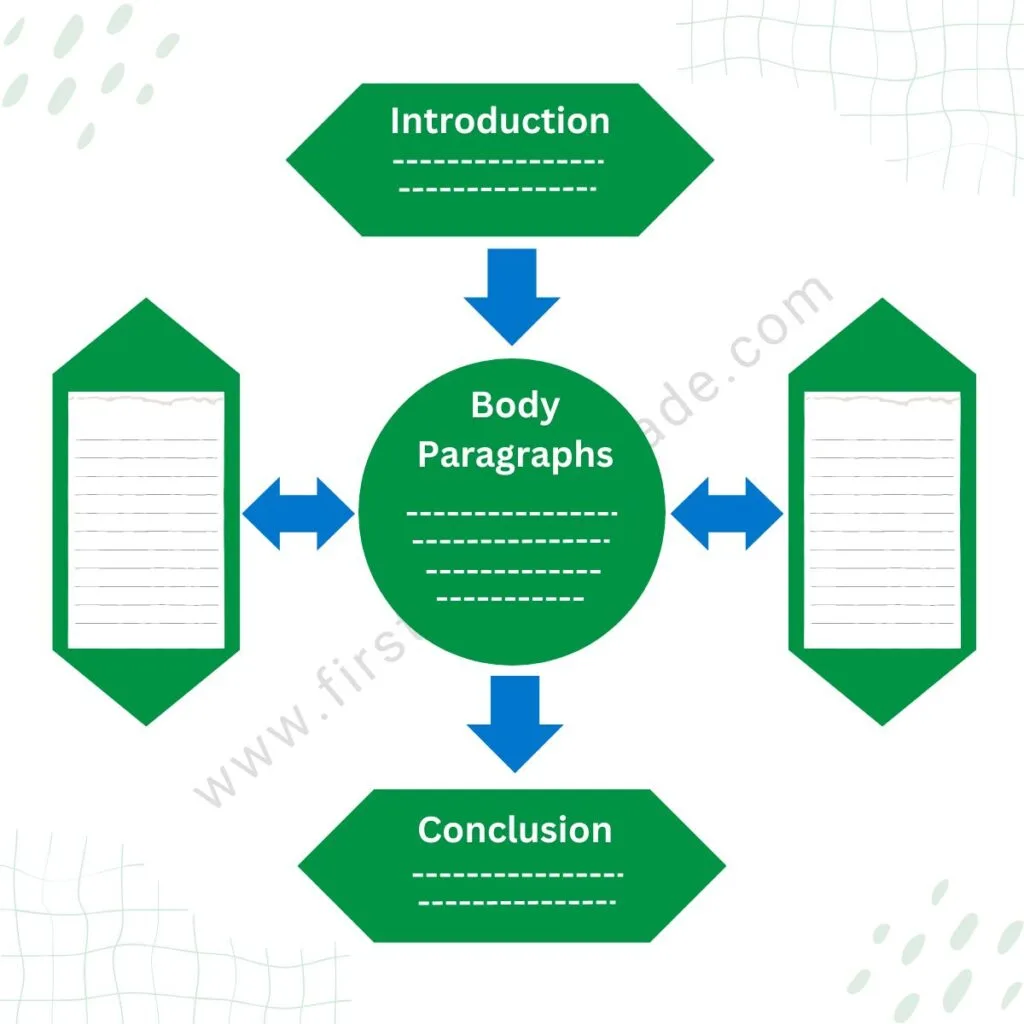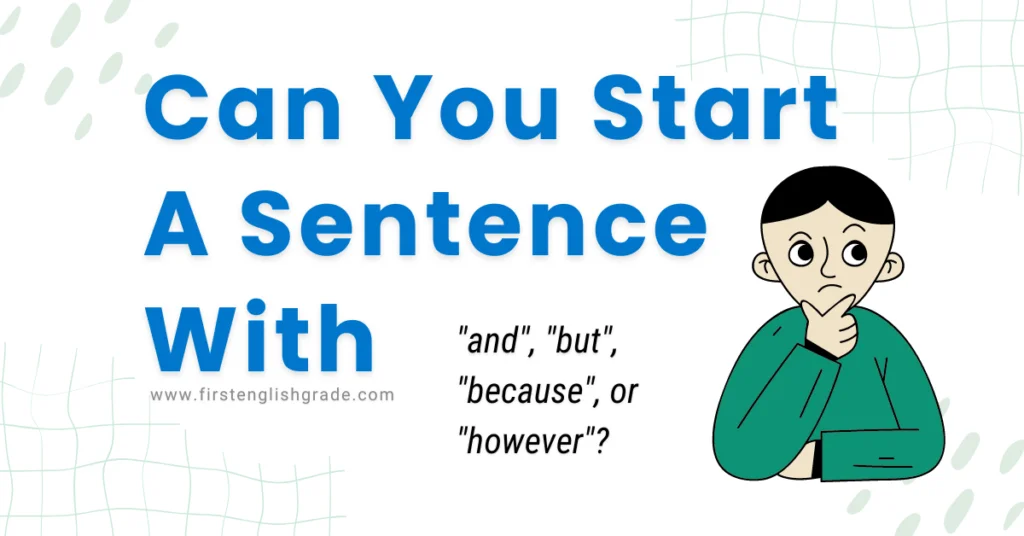

How to Write an Essay About Yourself | Writing Guide

Writing an essay about yourself might seem simple. After all, who knows you better than you do? But creating a compelling personal story takes careful planning, self-reflection, and a thoughtful approach. This guide will help you write an essay that grabs attention and leaves a lasting impression.
Content Guide
What is the Purpose of an Essay About Yourself?
Essay about yourself is all about looking inward and showing who you truly are. Personal essays let you to share your life stories, thoughts, and personal growth. Whether you’re writing for college applications, scholarships, job openings, or just a school project, a well-crafted personal essay can make a strong impact.
Types of Personal Essays
- College Admission Essays : College admission essays allow applicants to showcase their unique qualities and experiences, as highlighted in The College Board’s comprehensive guide on college application essay .
- Scholarship Applications : Highlight your unique skills, accomplishments, and goals.
- Professional Profiles : Showcase your traits, abilities, and experiences.
Think about why you are writing your essay. Are you hoping to stand out in a competitive college admissions process? Do you want to share an inspiring moment that shaped your goals? Understanding the purpose of your essay will guide your approach.
Key Elements of Personal Essays
Every great personal essay shares some important qualities:
- Honesty and Authenticity : Be true to yourself and share real thoughts and stories.
- Clarity and Focus : Make sure your essay has a clear goal and conveys your main points effectively.
- Engaging Writing Techniques : Using writing techniques, such as vivid language and storytelling, can help captivate readers and convey authenticity.
Think of one word that describes you best. How does this word show up in your life experiences? Jot down examples to help brainstorm for your essay.
How to Write an Essay About Yourself
Writing an essay about yourself can be a rewarding and insightful experience. It’s great for personal statements or reflective pieces. The key is to show your unique qualities, experiences, and growth. Here’s how to write an engaging essay about yourself:
Brainstorm Standout Qualities and Experiences
Take some time to reflect on your life experiences. Get a blank piece of paper and write down moments that stand out to you. Focus on times when you felt proud, faced a challenge, or experienced personal growth.
For example, I once found myself leading a neighborhood cleanup after a storm. At first, it felt overwhelming, but by the end of the day, I learned the power of community and perseverance.
Pause and think about a moment in your life that made you feel proud or changed you in some way. What lessons did you learn?
Choose Your Main Topic
From your brainstorming session , pick one strong idea that you can build your essay around. Your topic should be meaningful to you and interesting for others to read.
Let’s say you brainstormed about learning to cook with your grandmother – this could become an essay about family traditions, learning patience, or discovering your passion for cooking.
Use Vivid Details and Examples
Instead of just listing facts, paint a picture with your words. This helps your reader visualize your experiences and connect with your story.
Reflect on Personal Growth
One of the most powerful parts of a personal essay is showing how you’ve grown. Ask yourself: What did I learn from this experience? How has it shaped who I am today?
Once you’ve reflected on your growth, think about how to structure your story to make your essay flow smoothly.
Creating Your Essay Structure

Organize your essay into a clear beginning, middle, and end. Start with an introduction that hooks the reader and provides a glimpse of what’s to come. Use the body paragraphs to dive into your story, and wrap up with a conclusion that ties everything together.
Introduction
Your introduction should hook the reader and set the tone for the essay. It should include a sneak peek into the main theme you will explore.
Example Introduction:
“The kitchen timer rang, and the warm smell of vanilla and cinnamon filled our small apartment. I smiled as I pulled the cookies from the oven, remembering the first time I baked with Grandma Rosa. Back then, I didn’t know baking would teach me more than recipes—it would teach me patience and creativity.”
Think of a personal moment that grabs attention. What’s the first sentence that would make someone want to keep reading your story?
Body Paragraphs
The body paragraphs are where you dive into the details of your story. Each paragraph should support the main theme, using specific experiences and vivid details. Here’s how to craft strong body paragraphs:
- Start with a topic sentence : Introduce the main idea of the paragraph.
- Use specific examples : Share moments that illustrate your experience.
- Reflect on the meaning : Include insights or lessons learned to show growth.
Example Body Paragraph:
“Every Sunday, Grandma Rosa would tie an apron around my waist and pull out her worn recipe book. ‘Cooking is about patience,’ she would say as she showed me how to measure flour exactly or explained why we needed to wait for the butter to soften. At first, I found it frustrating. I wanted to rush through the steps and see the cookies finished, but each lesson taught me to slow down and focus. That patience later became a skill I relied on while studying for tough exams and navigating life’s challenges.”
Use phrases that guide the reader through your story, like “As time went on,” or “I soon realized that…” .
Pause and think about the most significant details in your story. What small moments help show your growth or lesson learned?
The conclusion should tie your story together, emphasizing what you’ve learned or how the experience has shaped you. Avoid ending abruptly—leave your reader with a clear takeaway or a memorable final thought.
Example Conclusion:
“Now, as I teach my younger sister how to make Grandma Rosa’s recipes, I understand that those baking lessons were really life lessons in disguise. Patience, precision, and creativity aren’t just baking skills—they’re tools I use every day in school and life. When I look back at those Sunday afternoons, I realize that Grandma Rosa was teaching me more than how to bake. She was teaching me how to handle life with grace and determination.”
Ask yourself: What’s the most important takeaway from your story? How can you end with a sentence that resonates with the reader?
How to Start an Essay About Yourself
Starting your essay in a captivating way is key to grabbing the reader’s attention. Your opening statement sets the tone and invites them into your story.
Hook Strategies That Capture Attention
Use one of these strategies to create an engaging opening:
- Start with a surprising fact or question : “Did you know that the average person changes careers three to seven times in their lifetime? My journey has been no exception.”
- Begin with a vivid memory or anecdote : “The sound of raindrops tapping against my window was like nature’s own drumbeat. It was the night before my first big move, and I felt both excited and terrified.”
- Open with a quote : Choose a quote that fits the message of your essay. “The story of my life is a series of moments, each one teaching me who I am.” – Unknown
Pause and write down three opening sentences for your essay. Which one feels the most compelling?
Incorporating Personal Experiences and Achievements
When writing an essay about yourself, find the right mix. You need to balance self-reflection and showcasing your personality . Choose experiences that reveal who you are and what you’ve learned.
How to Weave in Personal Experiences:
- Choose relevant stories : Pick experiences that support the main point of your essay.
- Add vivid details : Instead of saying, “I volunteered at an animal shelter,” describe it: “Every Saturday, I would walk into the shelter to the sound of barking dogs and the warm, welcoming smell of hay. It was here that I developed a deep empathy for those who couldn’t speak for themselves.”
- Reflect on what you learned : This is where you show growth. “Working at the shelter didn’t just teach me how to care for animals; it taught me the importance of compassion and persistence in all areas of my life.”
Make a quick list of three experiences that have shaped you. Next to each, jot down what you learned or how it impacted you.
Example Table of Personal Experiences:
Developing Your Writing Style
Writing a personal essay is more than just telling your story. It’s about showing your writing techniques and personality. You do this through your language, tone, and how you tell your story. We’ll look at ways to make your writing better and keep your readers interested.
Using Descriptive Language
You should use vivid language while writing an essay about yourself. This makes your story come alive for your readers. Try using metaphors, similes, and other figures of speech to make your story vivid.

Vary sentence structure
Mix short, impactful sentences with longer, more descriptive ones to keep your readers engaged. This keeps your essay exciting and keeps readers hooked until the end.
Balancing Show vs Tell
Good stories show, not tell. Instead of saying how you feel, show it through what you do and say. This makes your story more real and impactful for your readers.
“ Let your actions speak for your emotions. ”
Pick a sentence from your essay and rewrite it using more vivid language.
Editing and Refining Your Personal Essay
After drafting your essay, don’t rush to the finish line. Editing is where good writing becomes great.
Start by reviewing your essay yourself. Look for ways to make it better. Check the essay structure , how your story flows, and if your writing is clear.
Also, getting feedback from others can be helpful. Ask people you trust or mentors to read your essay. They can give you new ideas, point out what needs work, and suggest ways to make your writing better.
Read your essay out loud. Does it sound natural? Are there parts where you stumble or lose focus? Mark these sections and revise them.
Common Mistakes to Avoid in Personal Essays
Writing an essay about yourself is more than just telling your story. You must avoid common mistakes that can hurt your message. Let’s look at some important tips to help you write with confidence.
Being too general or vague
One big issue is being too general or vague. Personal essays need specific details and vivid descriptions to pull the reader into your story. Don’t just list your achievements without adding context or reflection.
Do not overshare
Being real is important, but too much information can push people away. Find a balance between sharing enough and keeping some things private. Stick to the most important parts that tell your story well.
Addressing sensitive topics without care
Sensitive topics like gender, race, politics, or religion can be challenging to navigate in a personal essay. Only discuss these topics if they are directly relevant to your narrative and handled with utmost care and sensitivity.
Excessive use of a thesaurus
Using a thesaurus excessively can make your writing sound unnatural and disconnected from your authentic voice. Focus on using clear, conversational language that resonates with your audience.
Abrupt ending
Ending your essay abruptly can leave the reader feeling unsatisfied or disconnected from your message. Conclude with a summary that reinforces your main theme and provides a memorable closing statement.
By avoiding these personal essay mistakes and using these essay writing tips , you can write a personal essay about yourself that captivates and impacts. The secret to a great personal essay is engaging the reader and sharing a story that resonates with them.
Essay About Yourself Example: Learning to Lead
It was the first day of summer camp, and my stomach was full of nervous butterflies. I had been chosen as a group leader for the first time, and I wasn’t sure I could do it. I looked around at the other campers, laughing and talking, and wondered if I could get them to listen to me.
On the second day, we were supposed to build a small boat out of cardboard and tape for a race across the pool. I wanted everything to go smoothly, but everyone had their own ideas. Some wanted to make the boat look fancy, while others just wanted to make it strong enough to float. As everyone started arguing, I felt panic rising in my chest. What if I couldn’t handle this?
I took a deep breath and remembered what my older brother once told me: “A good leader listens first.” So, I asked everyone to stop and share their ideas one at a time. After listening to everyone, we picked the best parts of each plan and started building. The laughter and teamwork that followed made me realize that leadership wasn’t just about giving orders—it was about bringing people together.
When the race started, our boat wasn’t the fastest, but it stayed afloat. We cheered as it crossed the finish line, and I felt a warm pride that wasn’t about winning. I learned that being a leader means helping others work as a team and making everyone feel included.
Looking back, that day taught me more than just how to lead a group. It showed me that even when I feel unsure, I can handle challenges by listening, being patient, and trusting myself. That lesson is something I carry with me, not just at camp but everywhere I go.
Final Thoughts
Writing an essay about yourself is an opportunity to share your unique story and show what makes you who you are. Embrace the process, be honest, and don’t be afraid to share a piece of yourself. With thoughtful planning and reflection, your essay will resonate and leave a mark.
Before you finish, ask yourself: Does this essay sound like me ? If it feels genuine, you’re on the right track.
Related Posts

Can You Start A Sentence With Conjunctions And Other Words?

Can You Start a Sentence with But?
Leave a comment cancel reply.
Your email address will not be published. Required fields are marked *
Save my name, email, and website in this browser for the next time I comment.
Calculate for all schools
Your chance of acceptance, your chancing factors, extracurriculars, tips for writing a strong essay introduction about myself.
I'm working on a college essay where I need to introduce myself effectively. How do you guys start an essay like this, and how do you make it engaging and interesting right from the beginning?
Writing a strong essay introduction is crucial to grabbing your reader's attention and making them want to read more. Here are a few tips to create an engaging and interesting introduction about yourself:
1. Start with a hook: Begin your introduction with a surprising fact, an anecdote, or an interesting question that will draw your reader in. This will set the tone for your essay and pique your reader's curiosity.
2. Be genuine and show your personality: Make sure the introduction reflects who you are and resonates with your personal voice. This is your chance to let your unique personality shine through. Avoid generic statements and clichés that could apply to anyone.
3. Establish a connection: Relate your story or anecdote to the audience or the prompt. This will make your introduction more relatable and show how your personal experiences have shaped who you are today.
4. Be concise: Keep your introduction brief and to the point. This is just the beginning of your essay, so you don't want to give away too much information or lose the reader's interest. Aim for a few captivating sentences that build anticipation for the rest of your essay.
5. Make it relevant: Stay focused on the college essay prompt and make sure your introduction clearly addresses the question being asked. It's important to stay on topic and ensure that your introduction is relevant to the essay as a whole.
For example, let's say you're writing an essay about discovering your passion for art and the impact it's had on your personal growth. Your introduction might start with a question like, "Have you ever felt the way a single brushstroke can change your entire perspective on life?" This invites the reader into your story and encourages them to reflect on their own experiences, setting the stage for a compelling essay about your unique journey.
About CollegeVine’s Expert FAQ
CollegeVine’s Q&A seeks to offer informed perspectives on commonly asked admissions questions. Every answer is refined and validated by our team of admissions experts to ensure it resonates with trusted knowledge in the field.
